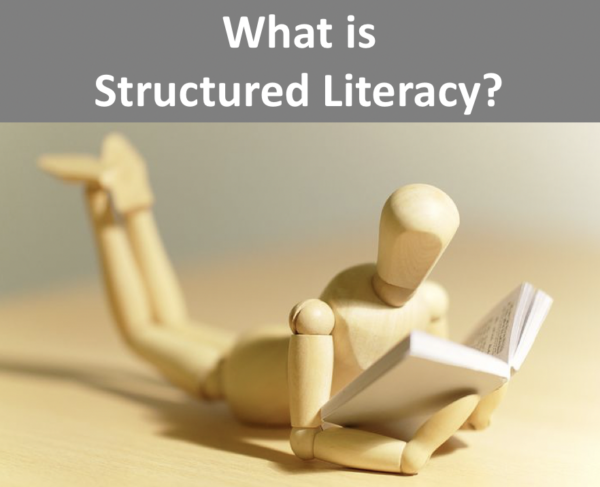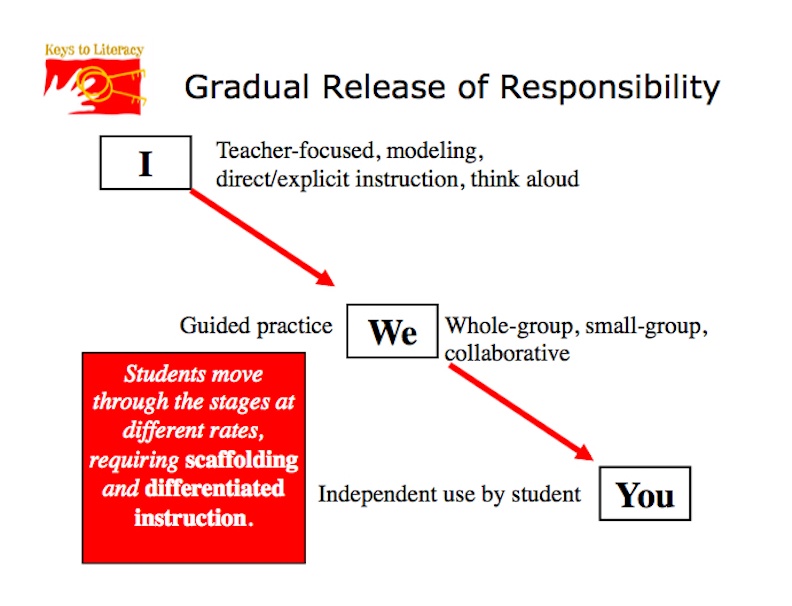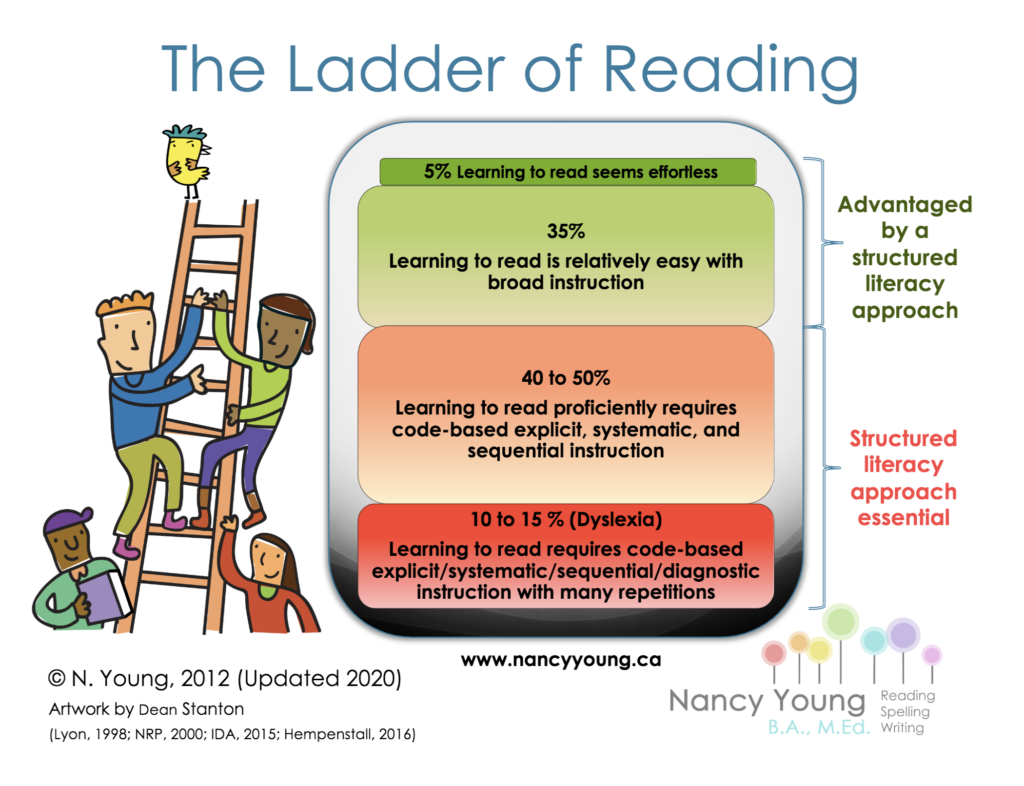What is Structured Literacy instruction?

Keys to Literacy recently launched our new “Understanding Dyslexia” online course, and one of the major topics in the course is the importance of using a structured literacy approach to teaching reading to students with dyslexia. Structured literacy is a comprehensive approach to literacy instruction that research shows is effective for all students and essential for students who have difficulty with reading. This approach addresses all the foundational elements that are critical for reading comprehension. It is characterized by the provision of systematic, explicit instruction that integrates listening, speaking, reading, and writing. It includes instruction for multiple levels of language (see my February 2020 post about language levels), including:
- Phonology (the speech sound system)
- Orthography (the writing system)
- Syntax (the structure of sentences)
- Morphology (the meaningful parts of words)
- Semantics (the relationships among words and their meanings)
- Discourse (the organization of spoken and written communication)
Structured Literacy does not involve just one particular program or method. The International Dyslexia Association notes that many well-known intervention programs, methods, and approaches fall under the umbrella of structured literacy. Click here to access their fact sheet about structured literacy.
Nancy Hennessey offers a helpful overview explanation of structured literacy in a video offered by the Center for Dyslexia at Middle Tennessee State University (MTSU). Hennessey describes it as a researched, systematic approach to teaching reading and writing that directly and explicitly teaches students how to work with written language. She identifies sounds (phonemes), sound-symbol correspondences, syllable types, spelling, and morphemes as components of structured literacy.
A structured literacy approach teaches students about the sound structure of language, letter knowledge (letter names, formations, and the sounds that correspond to the letters), types of syllables and the vowel sounds in syllables, spelling rules and generalizations, and the meaningful parts of words (roots, prefixes, suffixes). It also includes explicit instruction to support oral and reading comprehension, including how to make meaning from text. This includes teaching how sentences work (i.e., developing syntactic awareness), vocabulary, text structure, and comprehension strategies.
A hallmark of structured literacy is explicit instruction. MTSU offers a video featuring Anita Archer explaining explicit instruction as teaching that is direct and unambiguous with the goal that students will learn what is being taught. Archer suggests a continuum of instruction that has explicit teaching on one end that is essential when students are learning novice concepts and skills and for students who are struggling. These students benefit from very explicit instruction. On the other end of the continuum is discovery learning which is a good option once students have sufficient knowledge of content and skills. She also explains that explicit instruction includes picking important content to teach and breaking it into obtainable pieces that are taught directly along with practice that is deliberate and spaced over time.
Gradual Release of Responsibility Model (Pearson & Gallagher, 1983)

Another hallmark of structured literacy is employing a gradual release of responsibility model of instruction. This model gradually releases responsibility to students for independently using a reading skill or strategy. At the first instructional stage (I do it), the teacher presents a reading skill to students and uses modeling and think aloud. At the second stage (We do it), students practice the skill as a whole group or in small groups. The teacher guides this practice and provides corrective feedback to students. At the last stage (You do it), students practice the skill independently. Students require different amounts of practice and degrees of support in order to reach independent use. View my post from October, 2017 about this model.
Structured literacy is helpful for all students. Nancy Young has developed an infographic called the Ladder of Reading that provides a helpful summary of structured literacy. It includes “tiers” of instruction that indicate those students for whom structured literacy instruction is essential, and those students who are advantaged by a structured literacy approach. Access a copy of Young’s infographic here.

Structured Literacy Instruction: Keys to Literacy Professional Development
A structured literacy approach is helpful for all students, and especially those who have difficulty with reading and writing skills. All of the Keys to Literacy professional development programs incorporate a structured approach to teaching that is direct, explicit, and includes the gradual release model. If you are looking for specific suggestions for structured literacy, check out the professional development options for Keys to Literacy’s teacher training programs:
- Keys to Beginning Reading incorporates structured literacy suggestions for teaching young children how to read
- The Key Comprehension Routine and The Key Vocabulary Routine include explicit instruction strategies for teaching reading for meaning to students in grades 4-12.
- Keys to Early Writing and Keys to Content Writing include a structured literacy approach to teaching writing.
Reference
Pearson, P.E., & Gallagher, M.C. (1983). The instruction of reading comprehension. Contemporary Educational Psychology, 8, 317-344.

 Joan Sedita is the founder of Keys to Literacy and author of the Keys to Literacy professional development programs. She is an experienced educator, nationally recognized speaker and teacher trainer. She has worked for over 35 years in the literacy education field and has presented to thousands of teachers and related professionals at schools, colleges, clinics, and professional conferences.
Joan Sedita is the founder of Keys to Literacy and author of the Keys to Literacy professional development programs. She is an experienced educator, nationally recognized speaker and teacher trainer. She has worked for over 35 years in the literacy education field and has presented to thousands of teachers and related professionals at schools, colleges, clinics, and professional conferences.
Leave a Reply